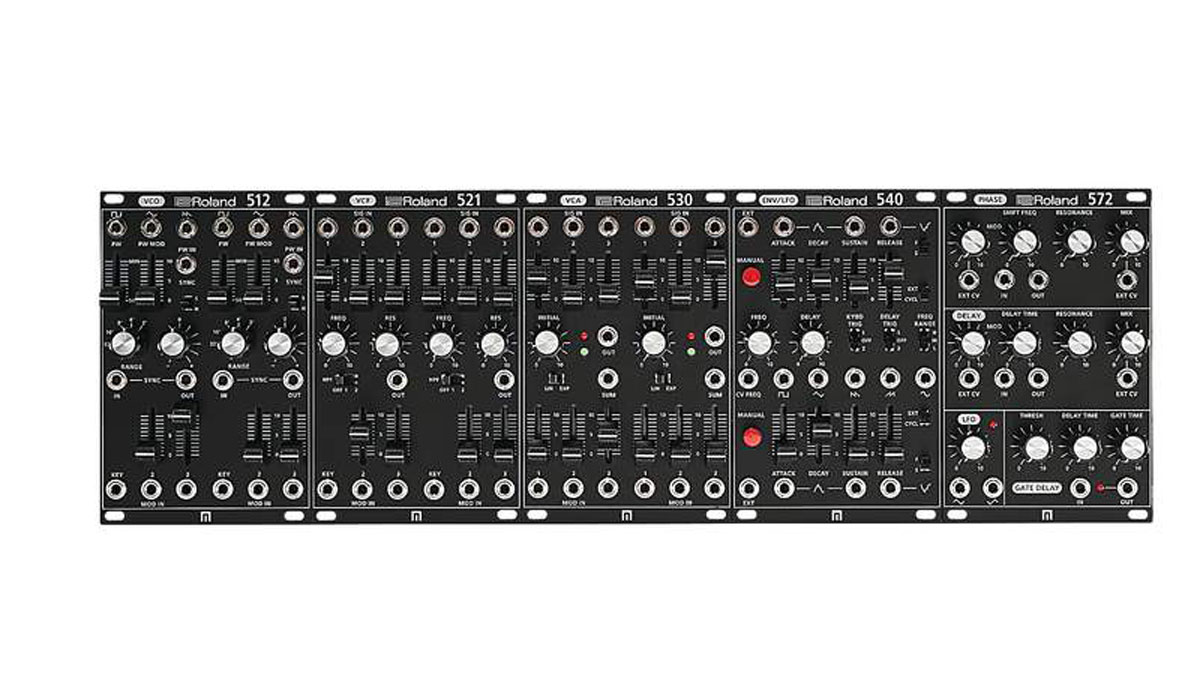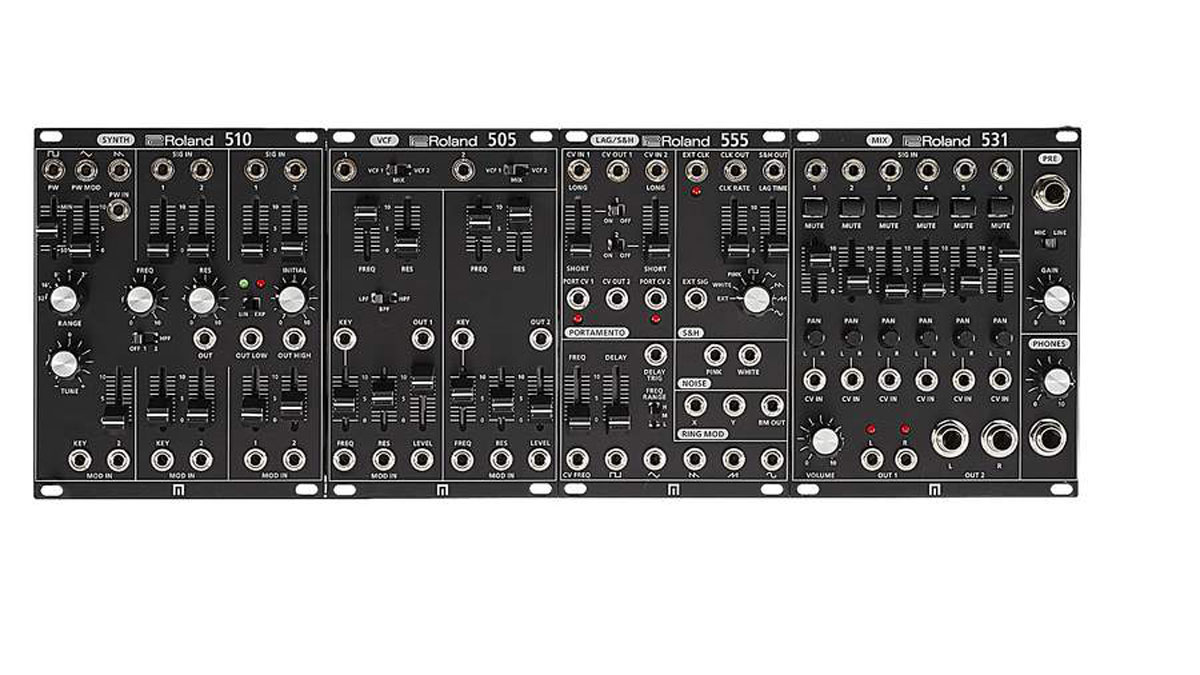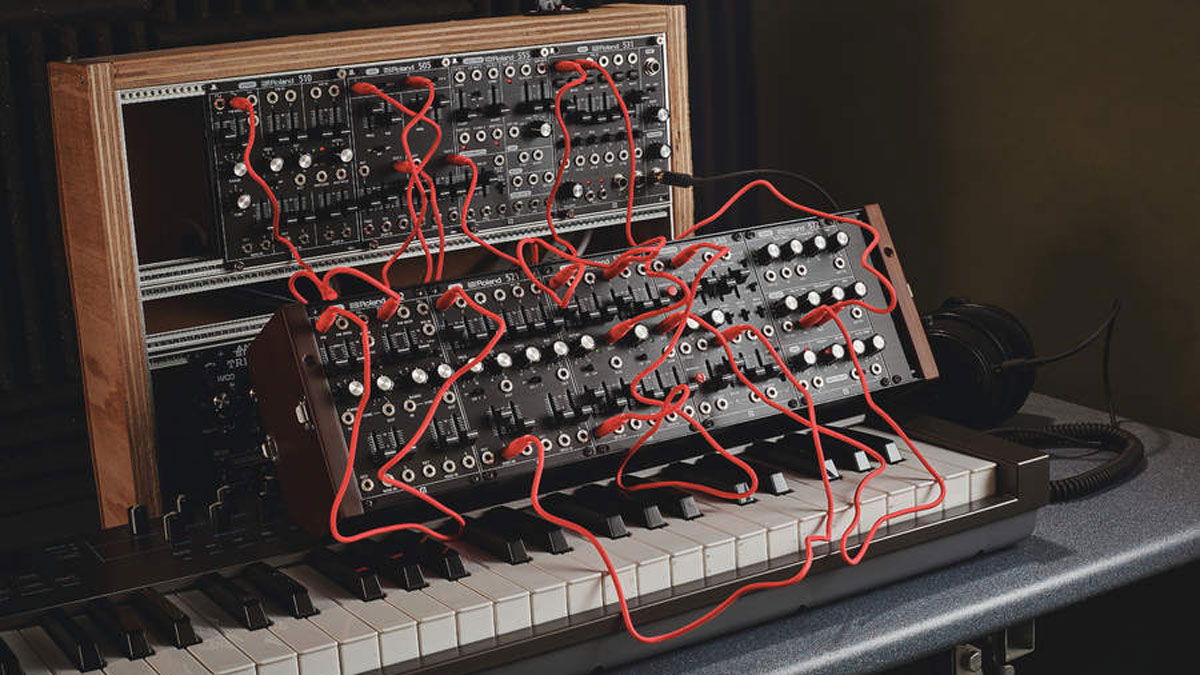MusicRadar Verdict
Fiddlier than Roland’s original modules, and they don’t come cheap, but functionally, Roland and Malekko get it right.
Pros
- +
High build quality, close to the intent of the original 100m modules.
- +
They sound great - especially the two filter modules.
- +
The 510 Synth module distills some of the best elements into one module.
Cons
- -
There isn’t any spare space on the front panels of the modules, which leaves very little room for descriptive text and cables… or fingers.
- -
The Complete Set package would have benefitted from a module with interconnected multiples.
MusicRadar's got your back
The modular renaissance sees no sign of abating, and Roland, it seems, is keen to ensure we don’t forget its significant contribution to the patchable synthesis pantheon.
Although Roland hasn’t been shy of revisiting past analogue glories, this has mainly come in the form of a range of digitally-modelled devices. Some of this DSP research also went into Eurorack units, but it was the announcement in 2015 that Roland, with the help of Malekko Heavy Industry Corporation, would be releasing some ‘real’ analogue modules that really got the purists excited.
The first wave of Roland’s modular rebirth introduced five separate modules, and a ‘Complete Set’ package with all of them built into a powered wood and metal Eurorack case, and supplied with a bundle of patch cables to get you started.
Earlier this year, news came that the range was to expand further to include four new modules. While this means that previous ‘Complete Set’ owners will have to start saving again to complete their collection, it is good news for us, and shows Roland’s willingness to keep the analogue flame alive. This brings us to the Roland 500 Series.
These are designed in collaboration with Malekko in the US and built in Japan, largely influenced by the original System 100m modules. The initial five modules (512, 521, 530, 540 and 572) were very closely aligned with their forebears (112, 121, 130, 140 and 172), the second tranche however - not including the 510 and 531 - moves a little further from the originals. The 505 VCF has no direct vintage modular version, and takes its cue from the filter section of the Roland SH-5 synth.
The 555 combines features found in the 150 and 165. Remember: Eurorack modules are much smaller than their ’70s Roland counterparts. To facilitate this shrinkage, and employ up-to-date manufacturing techniques, they use two piggybacked printed circuit boards and surface-mounted components (with the exception of a lowly ‘full-size’ MN3007 delay IC on the 572 module). The front board hosts the pots, faders, buttons, switches and sockets, whilst the rear board takes care of the signal generating and processing magic.

Some will balk at the use of SMDs, though for them it will be a case of paying a premium for original vintage units or nothing at all. For the rest of us, the components, when used in nearly all audio frequency circuits, can be thought of as effectively equivalent.
One big downside to miniaturisation comes with the front-panel elements. The bottom line is that there is far less space within which to work, and an increased density of cables when patching, which in turn makes reading and accessing controls more fiddly. We also missed the painted lines around functional blocks within a module, and more expansive descriptive text, from the 100m. We get Roland’s reasons for choosing the Eurorack format, but this does mean programming is trickier at times.
A good place to start within the 500 Series is the 510 SYNTH module. This is a 20HP module featuring combined VCO, VCF and VCA sections. Some of the sockets are internally patched, so you can get a basic sound out with minimal fuss. With only this module playing, results were excellent from the start. Patching the square wave though, the (24dB/octave) filter delivered a satisfying resonant squelch. Nudging Resonance up eventually ends in self-oscillation, making the filter very flexible. Switching to the Square wave and introducing an external LFO patched to modulate Pulse Width was equally good, and allowed me to conjure up some of the warm, wavering, low tones reminiscent of my beloved SH-02.
So far so good, and if you aren’t in the market for spending huge sums on multiple modules this should make a great buy. If you’re looking at a self-contained modular system package, then the ‘Complete System’ makes a decent option. It consists of the 512 Dual VCO, 521 Dual VCF, 530 Dual VCA, 540 Dual Envelope & LFO and 572 Phase Shifter/Analogue Delay/CV Gate Delay/LFO, all housed in a very fetching custom case. As mentioned, these are all closely related to similar modules on the original 100m.
The 512 adds separate output jacks for the waveforms (square, triangle and saw) in each VCO section, but otherwise maintains the pulse width CV modulation and two oscillator sync options. CV pitch-tracking is good, and tonally the module does what you’d expect. The 521’s two 24dB/octave filters are similar to that in the 510, but this time with a few more options for modulation patch points. As the input faders are pushed, some satisfying saturation begins to occur.
Roland’s journey to the current 500 Series modules begins with its first synth, the SH-1000, in 1973. By 1976, technology from the SH line went into the System 100, a semi-modular setup with the Model-01 Synthesizer at its core. The same year Roland released the System-700 modular system - a legendary nine-VCO colossus. Two years on, the System-100M was developed as a more compact, consumer-friendly modular. Available in a range of standard configurations, additional modules let you expand the functionality to suit your needs and budget. Besides the various keyboard controllers and ‘computer interface’ modules, these are the remaining modules whose functions the current 500 Series has yet to incorporate: 132: Dual Mixer + Voltage Processor 141: Dual Envelope, Gate Delay + Invert/Adder 170: Pitch/Voltage Converter, Envelope Follower + Amp 173: Quadruple Signal Gate + Multiples 174: Parametric Equalizer 182: Analog Sequencer ’Course, they may choose to make modules based on other areas of the Roland catalogue - perhaps even something perc-related?
A similar thing happens with the 530 VCAs. Both let you add dirt or warmth, and sound great. Each VCA has three input mixer sliders, three sliders for mixing CV control signals and a selector switch for linear or exponential response modes. The 540 Envelope Generator and LFO has two independent ADSR envelope sections (with two speed settings and ‘normal’ and inverted outputs) which can be triggered externally from a Gate signal or manually via an onboard button. One nice addition to this modern version is the ability to switch into an LFO-like cyclic mode, with the shape and frequency determined by the Attack and Release times.
The LFO section features five waveform output, LFO start, reset and delay and CV control of frequency. The final part of the ‘Complete’ bundle consists of the multi-function 572 Phase Shifter, Delay and LFO. There is nothing like a phase shifter for adding movement to pulsing or sequenced synth lines. This Roland effect does a good job, and goes further than the original 172 module by offering a wet/dry mix control (with patchable CV control). The delay section, driven by a BBD IC, is great for creating chorus and flanging effects. Increasing the delay time beyond the limits of the Delay Time control, things get progressively more lo-fi, and with the high-pitched tone of the clocking circuit becoming audible. The Gate Delay can be used as a pulse shaper or for delaying a pulse source. The simple triangle-only LFO features both normal and inverted output jacks, and is ideal for modulating the delay time and phase shift.

As a package, the ‘Complete’ set is a great way of accessing the core vintage-style Roland tone, and would work well within an existing modular setup. One big omission for us, though, was the lack of any Multiple module. The original 100m had nine four-way multiple jacks along the lower portion of its front panel. This made complex patch creation much simpler.
The most exciting of the remaining 500-series modules for me is the 505 VCF, based around the filter section of Roland’s SH-5, a monophonic beast of a synth. The 505 has two VCFs and two VCAs. VCF1 is a multi-mode filter (LP, BP, HP) and VCF2 band-pass only, with the output from each capable of being mixed to either VCA. Tonally, this is quite different from the filter on the 510 and 521 modules, so it’d make a nice addition if you already have a ballsy low-pass filter in your armoury.
The 531 MIX module is inspired by the original 131, but adds more inputs (with mute), CV control of pan and a stereo mini-jack mic/line preamp normalled to inputs 5&6. The relatively unglamorous, but very useful, 555 LAG/S&H module combines features of the 150 and 165. While the noise section and ring modulator are the only audio generator/processors here, the inclusion of portamento and sample & hold are both great - and an extra LFO will always come in handy.
The return of Roland to the analogue modular fray is only to be welcomed, and the quality of all the units in the 500 Series is high. That said, this attention to detail comes at a price, and the choice will depend on your wallet. Notwithstanding the size of the modules - which can be levelled at most Eurorack units - these were a pleasure to use. If you’re looking to add some of the famed sonics to your existing setup, then the 510 Synth Voice Module would make a great purchase. Want the complete magic? Buy them all!
With its latest free update, Ableton has finally turned Note into the app I always wanted it to be
Technically capable, but struggle to make your tunes sound musical? 5 simple music theory hacks to make your tracks stand out
"Despite its size, it delivers impressive audio quality and premium functions as well as featuring a good selection of inspired sounds": Roland GO:Piano 88PX review










